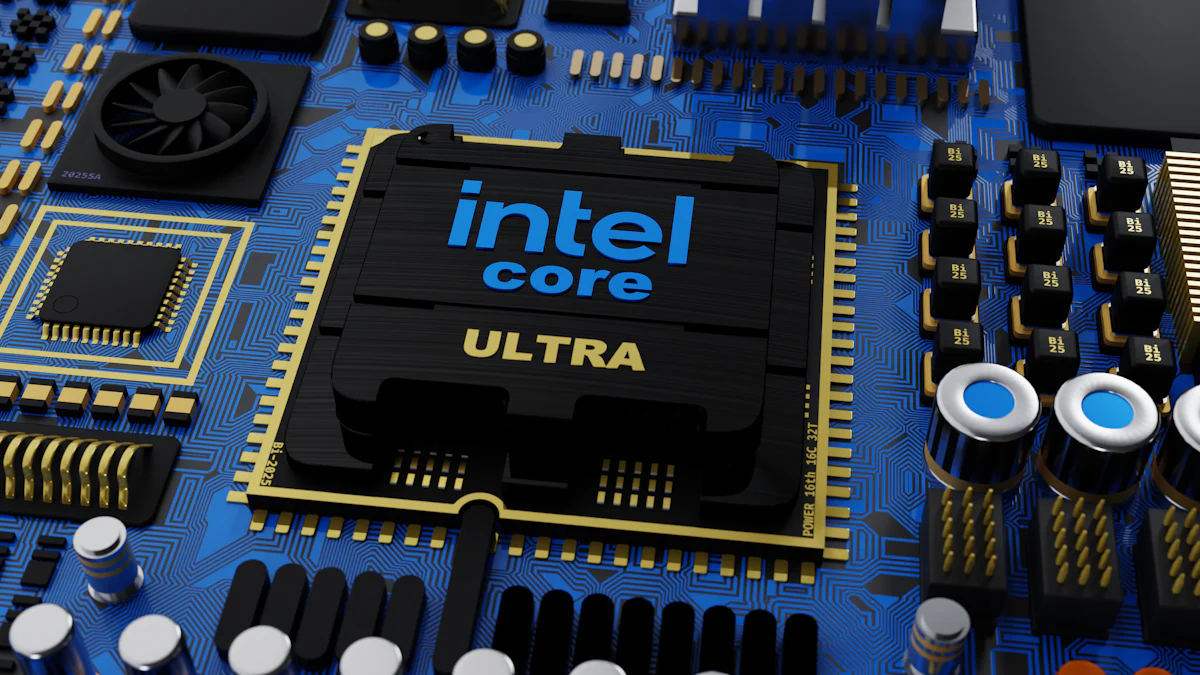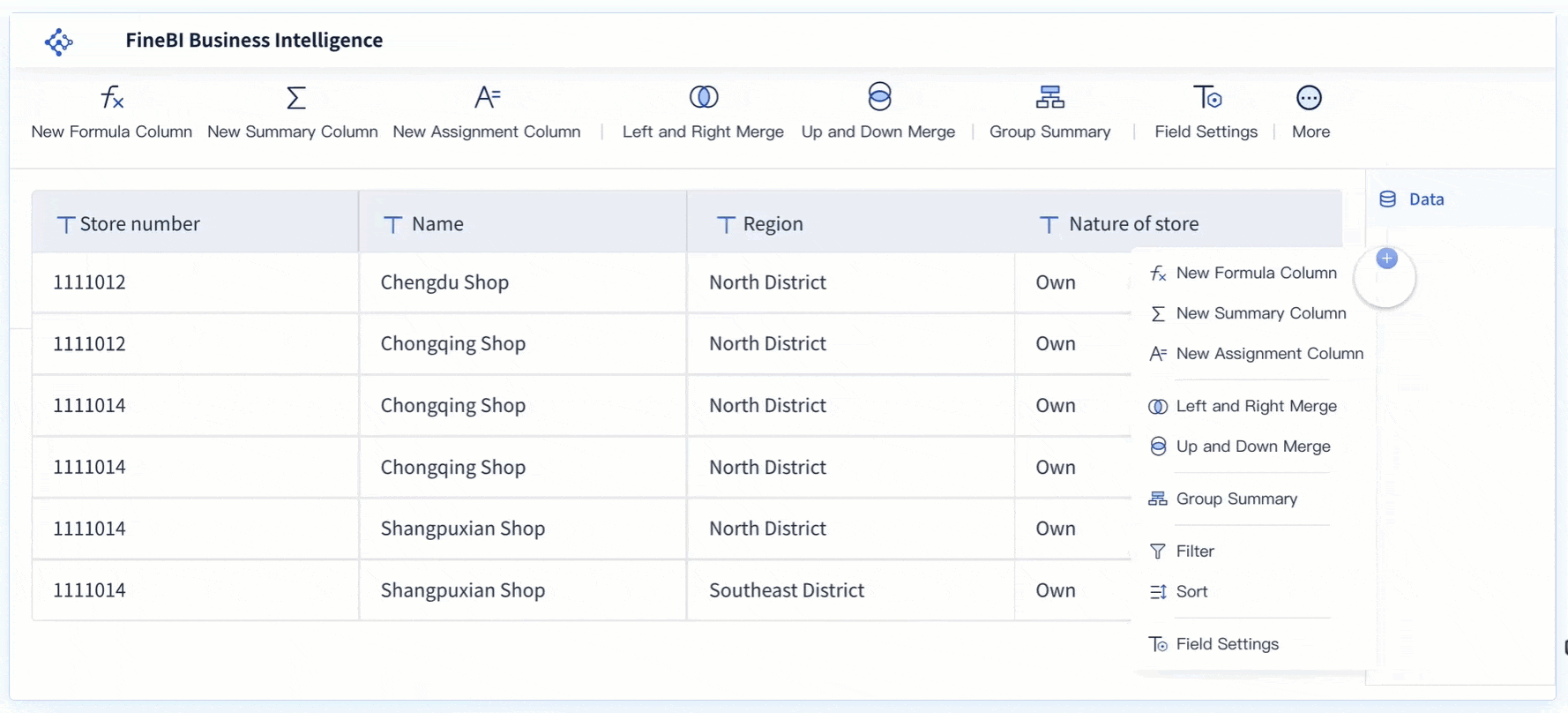


BI Architecture forms the backbone of your business intelligence efforts. It provides a structured framework for gathering, storing, and analyzing data. This architecture ensures that you have the right data at the right time, empowering you to make informed decisions. Understanding BI Architecture is crucial. It enhances decision-making and operational efficiency. With 92% of businesses increasing their use of BI tools, grasping this concept becomes even more vital. As companies invest more in analytics, knowing how BI Architecture works can give you a competitive edge.
Understanding BI Architecture
Definition of BI Architecture
BI Architecture serves as the foundation for your business intelligence efforts. It consists of several key components that work together to transform raw data into actionable insights.
Key Components
- Data Sources: These include both internal and external data, providing a comprehensive view of your business environment.
- Data Integration: This involves processes like ETL (Extract, Transform, Load) and data warehousing, ensuring seamless data flow.
- Analytical Tools: Tools such as OLAP and data mining help you analyze and visualize data effectively.
Framework Overview
The framework of BI Architecture provides a structured approach to managing data. It ensures that data is collected, stored, and analyzed efficiently. This structure empowers you to make informed decisions by delivering the right data at the right time.
Historical Context of BI Architecture
Understanding the history of BI Architecture helps you appreciate its evolution and current significance.
Evolution of BI Systems
In the 1980s, data warehouses became popular, reducing the time needed to access data and centralizing storage. Howard Dresner proposed the term "Business Intelligence" in 1989, marking a shift from mainframe-based analytics to more advanced BI tools.
Technological Advancements
Modern BI architectures have embraced cloud-based solutions, offering agility and flexibility. The increased use of the cloud has led to the growth of cloud-based data warehouses and BI tools. These advancements allow you to scale and adapt your BI systems to meet changing business needs.
"The comprehensive structure of BI architecture empowers organizations to generate meaningful insights."
By understanding these components and historical developments, you can better appreciate the role of BI Architecture in today's data-driven world.
Core Components of BI Architecture

Understanding the core components of BI Architecture is essential for leveraging data effectively. These components form the backbone of your business intelligence efforts, enabling you to collect, process, and analyze data efficiently.
Data Sources
Data sources are the starting point of any BI Architecture. They provide the raw material for your analysis.
Internal Data
Internal data comes from within your organization. This includes sales records, customer information, and operational data. You can use this data to gain insights into your business processes and performance. By analyzing internal data, you can identify areas for improvement and make informed decisions that align with your business goals.
External Data
External data originates outside your organization. It includes market trends, competitor analysis, and customer feedback. Incorporating external data into your BI Architecture allows you to understand the broader market environment. This understanding helps you adapt to changes and seize new opportunities.
Data Integration
Data integration is a crucial component of BI Architecture. It ensures that data integration from various sources is combined and made ready for analysis.
ETL Processes
ETL (Extract, Transform, Load) processes are vital for data integration. They extract data from different sources, transform it into a usable format, and load it into a data warehouse. ETL processes ensure that your data is accurate and consistent, providing a solid foundation for analysis.
Data Warehousing
Data warehousing involves storing integrated data in a centralized repository. This allows you to access and analyze data without relying on your IT team. A well-designed data warehouse supports real-time data access, enabling you to make timely decisions based on the latest information.
Analytical tools
Analytical tools are the final piece of the BI Architecture puzzle. They help you turn raw data into actionable insights.
OLAP
OLAP (Online Analytical Processing) tools allow you to perform multidimensional analysis of your data. You can explore data from different perspectives, identify patterns, and uncover insights that drive strategic decisions. OLAP tools are essential for understanding complex data sets and making data-driven decisions.
Data Mining
Data mining involves discovering patterns and relationships in large data sets. It helps you identify trends, predict future outcomes, and make informed decisions. By using data mining techniques, you can uncover hidden insights that give you a competitive edge in your industry.
"The infrastructure a company deploys to support all stages of the BI process helps companies make effective decisions aligned with business needs."
By understanding these core components, you can build a robust BI Architecture that supports your organization's decision-making processes. This architecture provides a comprehensive framework for data collection, processing, and analysis, enabling you to optimize operations and identify trends.
Importance of BI Architecture
Enhancing Decision-Making
Real-Time Insights
BI Architecture empowers you to access real-time insights. This capability allows you to make informed decisions quickly. You can monitor current trends and respond to changes as they happen. Real-time data helps you stay ahead of competitors by adapting strategies promptly.
Predictive Analytics
With BI Architecture, you can leverage predictive analytics. This tool enables you to forecast future trends based on historical data. By understanding potential outcomes, you can plan effectively and mitigate risks. Predictive analytics provides a strategic advantage, allowing you to anticipate market shifts.
Improving Efficiency
Streamlined Processes
BI Architecture streamlines your data management processes. It automates tasks like data collection and integration, reducing manual effort. This automation minimizes errors and enhances accuracy. You gain a clear understanding of your data operations, which helps identify areas for improvement.
Cost Reduction
Implementing BI Architecture leads to significant cost savings. By automating data management activities, you reduce the need for extensive IT resources. This efficiency prevents shadow IT and relieves your team from tedious tasks. As a result, you spend less time gathering data and more time analyzing it for strategic insights.
Benefits of a Well-Designed BI Architecture

Scalability
A well-designed BI architecture offers significant benefits, especially in scalability.
Adapting to Growth
Your business needs to adapt as it grows. A scalable BI architecture allows you to handle increasing data volumes without compromising performance. You can expand your data systems seamlessly, ensuring that your analytics keep pace with your business expansion.
Flexibility in Operations
Flexibility is crucial for responding to changing business needs. A robust BI architecture provides the flexibility to modify and update your data processes easily. This adaptability ensures that your operations remain efficient and responsive to new challenges and opportunities.
Data Accuracy
Data accuracy is another critical benefit of a well-structured BI architecture.
Reliable Data Sources
Reliable data sources form the foundation of accurate analytics. By integrating trustworthy data sources, you ensure that your insights are based on solid information. This reliability enhances your decision-making, allowing you to act with confidence.
Consistent Reporting
Consistent reporting is essential for maintaining trust in your data. A well-designed BI architecture standardizes your reporting processes, ensuring that all stakeholders receive the same accurate information. This consistency helps you avoid misunderstandings and supports clear communication across your organization.
IDC Study: "By implementing a BI architecture, a company gets a high-performing information management environment, with all components connected and working together."
This interconnected system maximizes the value of your data, reducing manual intervention and minimizing dark data. By leveraging these benefits, you can enhance your business intelligence efforts and drive strategic success.
Implementing BI Architecture
Planning and Strategy
Implementing BI Architecture requires careful planning and strategy. You need to set clear objectives and allocate resources effectively.
Setting Objectives
Define what you want to achieve with your BI Architecture. Clear objectives guide your implementation process. They help you focus on specific goals, such as improving decision-making or enhancing data accuracy. By setting precise targets, you can measure success and make necessary adjustments.
Resource Allocation
Allocate resources wisely to support your BI initiatives. Consider the budget, personnel, and technology needed. Proper resource allocation ensures that you have the tools and team required to build a robust BI system. This step is crucial for maintaining efficiency and achieving your objectives.
Technology Selection
Choosing the right technology is vital for successful BI Architecture implementation. You must select tools that align with your business needs and integrate seamlessly with existing systems.
Choosing the Right Tools
Select BI tools that match your requirements. Consider factors like data integration capabilities, ease of use, and scalability. Popular options include FineBI, Power BI, and Looker. These tools offer powerful analytics and visualization features, making them suitable for various business sizes.

- FineBI: Known for its intuitive interface and strong data visualization capabilities.

- Power BI: Offers robust integration with Microsoft products and is user-friendly.
- Looker: Provides advanced analytics and is highly customizable.
Integration with Existing Systems
Ensure that your chosen tools integrate smoothly with your current systems. This integration minimizes disruptions and enhances data flow. Tools like Domo and Zoho Analytics offer seamless integration, allowing you to unify data, systems, and people for efficient operations.
"The right technology selection can transform your BI efforts, maximizing data value and supporting strategic decisions."
By focusing on planning, strategy, and technology selection, you can implement a BI Architecture that meets your business needs and drives success.
Best Practices for BI Architecture
Ensuring Data Security
Data security is crucial in BI architecture. You must protect sensitive information to maintain trust and compliance.
Access Controls
Implement strong access controls. Limit data access to authorized personnel only. Use role-based permissions to ensure that users can only access the data necessary for their roles. This approach minimizes the risk of unauthorized data exposure.
Data Encryption
Encrypt your data both in transit and at rest. Encryption protects your data from unauthorized access and ensures confidentiality. By using encryption, you safeguard sensitive information against potential breaches.
"Data security measures like access controls and encryption are essential for protecting valuable business insights."
Continuous Improvement
Continuous improvement keeps your BI architecture effective and relevant. Regular updates and feedback mechanisms help you adapt to changing needs.
Regular Updates
Regularly update your BI tools and systems. Updates ensure that you have the latest features and security patches. Staying current with technology enhances performance and reduces vulnerabilities.
Feedback Mechanisms
Establish feedback mechanisms to gather user input. Encourage users to share their experiences and suggestions. Use this feedback to make informed improvements to your BI architecture. Engaging users in this way helps you create a system that meets their needs.
"Continuous improvement through updates and feedback ensures your BI architecture remains robust and user-friendly."
By following these best practices, you can build a secure and adaptable BI architecture. This approach empowers you to leverage data effectively, driving better business outcomes.
Common Challenges and Solutions of BI Architecture
Data Quality Issues
Data quality is crucial for effective business intelligence. Poor data quality can lead to inaccurate insights and misguided decisions. You must address these issues to ensure reliable analytics.
Data Cleansing Techniques
Data cleansing involves correcting or removing inaccurate records from your database. You can use automated tools to identify and fix errors. Regular data audits help maintain accuracy. By implementing these techniques, you ensure that your data remains clean and trustworthy.
Validation Processes
Validation processes verify the accuracy and consistency of your data. You should establish rules and checks to confirm data integrity. Automated validation tools can streamline this process. Consistent validation ensures that your data supports sound decision-making.
"A high-performing information management environment relies on clean and validated data."
User Adoption
User adoption is essential for the success of BI architecture. If users find the system difficult, they may resist using it. You need strategies to encourage engagement and ease of use.
Training Programs
Training programs equip users with the skills needed to navigate BI tools. You should offer comprehensive training sessions tailored to different user levels. Interactive workshops and hands-on practice enhance learning. Well-trained users are more likely to embrace BI systems.
User-Friendly Interfaces
User-friendly interfaces make BI tools accessible to everyone. You should prioritize intuitive design and clear navigation. Simplified dashboards and customizable views cater to diverse user needs. By focusing on usability, you increase user satisfaction and adoption rates.
"Synchronizing technology and people is key to maximizing the value of BI architecture."
By addressing these challenges, you create a robust BI architecture that empowers your organization. This approach ensures that your data-driven strategies are effective and aligned with your business goals.
BI Architecture plays a crucial role in your data-driven decision-making and organizational success. It enables you to gain valuable insights, maximize operational efficiency, and drive strategic growth by integrating data sources seamlessly. Investing in robust BI systems empowers you to harness data effectively and make informed decisions. As technology evolves, future trends in BI Architecture will likely focus on real-time data processing and enhanced analytics capabilities. Staying ahead of these trends ensures that your business remains competitive and agile in a rapidly changing environment.
FAQ
BI Architecture is a structured framework that helps you gather, store, and analyze data efficiently. It ensures that you have the right data at the right time, enabling informed decision-making.
BI Architecture is crucial because it enhances decision-making and operational efficiency. It provides a clear roadmap for your business intelligence efforts, helping you stay competitive.
The core components include:
Data Sources: Internal and external data.
Data Integration: ETL processes and data warehousing.
Analytical Tools: OLAP and data mining.
BI Architecture provides real-time insights and predictive analytics. These tools help you improve decision-making and anticipate future trends.
Common challenges include data quality issues and user adoption. Address these with data cleansing techniques and user-friendly interfaces.
Implement strong access controls and data encryption. These measures protect sensitive information and maintain trust.
Continue Reading About BI Architecture
Empower Your Business: Best Financial Reporting Tools 2025
Discover the best financial reporting tools in 2025 for streamlined processes and accurate insights. Empower your business with advanced solutions!
Lewis
Jun 15, 2024
What Is BI Reporting and Why Does It Matter?
BI reporting transforms raw data into actionable insights, helping businesses make data-driven decisions, improve efficiency, and gain a competitive edge.
Lewis
Feb 08, 2025
Why Every Organization Needs a Data Management Framework
A data management framework ensures data accuracy, security, and compliance, vital for informed decision-making and strategic growth in any organization.
Howard
Nov 12, 2024



